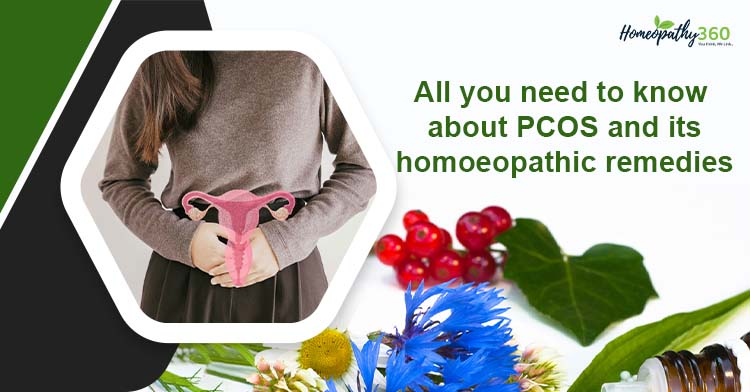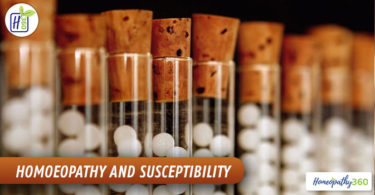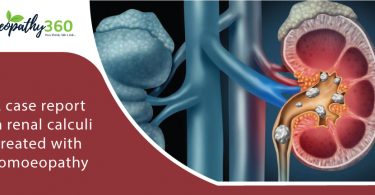
ABSTRACT
Polycystic Ovarian Syndrome is symptom complex with amenorrhoea (absence of menses), hirsutism (increased body hair) and enlarged ovaries with multiple cysts. It has now become the most common hormonal disorder in women. P.C.O.S. may set in early adolescent life and is now well recognised as one of the most common cause of infertility in reproductive age group, it may also have long term implications on the patient’s metabolic, reproductive and cardiovascular health.
KEYWORDS PCOS, Obesity, Type 2 Diabetes Mellitus, Cardiovascular diseases
ABBREVIATIONS PCOS- Polycystic Ovarian Syndrome
INTRODUCTION-
Polycystic ovarian disease is a heterogenous, multisystem endocrinopathy in women of reproductive age with the ovarian expression of various metabolic disturbances and a wide spectrum of clinical features such as obesity, menstrual abnormalities and hyperandrogenism. It was discovered by and named as Stein-Leventhal Syndrome in 1935. Current incidence of PCOS (5-6%) is fast increasing lately due to change in lifestyle and stress.(1)
PREVELANCE
The estimated prevalence in India ranged from 3.7 to 22.5 per cent.(2) The prevalence estimates also vary according to the criteria from 4%–8% as per the (National Institute of Health) NIH/NICHD (National Institute of Child Health and Human Development) criteria to as high as 15%–20% when the (European Society of Human Reproduction and Embryology) ESHRE/ASRM (American Society for Reproductive Medicine) criteria are used. A cross-sectional study among adolescent and young girls in Mumbai, India, indicated the prevalence of 22.5% by Rotterdam and 10.7% by Androgen Excess Society criteria. The prevalence of PCOS in the Indian subcontinent Asian women was 52%(3). The prevalence of PCOS was found to be higher or lower depending on the criteria used, which might be the obvious reason for the discrepancy in the prevalence rates among the studies.(2)
The rates of PCOS in mothers and sisters of patients with PCOS were 24% and 32%, respectively, although the risk was higher when considering untreated premenopausal women only(4).
ETIOLOGY AND PATHOGENESIS-
PCOS has been attributed to several causes such as-
- Change in lifestyle
- Diet
- Stress
- Genetic and familial environmental factors (autosomal dominant inherited factors) were later added as etiological factors in development of PCOS.
Another view held for occurrence of PCOS is enhanced serine phosphorylation unification activity in the ovary (hyperandrogen) and reduced insulin reception activity peripherally (insulin resistance).(1)
Obesity and PCOS-
Polycystic ovary syndrome is an obesity-related condition. As such, weight-gain and obesity contribute towards the development of PCOS. However, there are also mechanisms whereby the development of PCOS can contribute towards further weight-gain and hamper efforts to establish effective weight-loss. Weight-gain and obesity in women with PCOS also promote worsening insulin resistance, and both metabolic dysfunction (mediated through further impairment of the PI3-kinase post-receptor insulin pathway) and the characteristic reproductive and hyperandrogenic features of this condition. Therefore, the effects of weight-gain on insulin resistance and hyperinsulinaemia, and the dysmetabolic and steroidogenic implications of the impaired PI3-kinase and intact MAP kinase post-receptor insulin pathways, respectively, form a central component of PCOS pathogenesis and underlie the association of weight-gain and obesity with PCOS(5)
CLINICAL FEATURES-
Clinical features of PCOS develop early with oligomenorrhoea (87%) or with a short period of amenorrhoea (26%) followed by prolonged or heavy periods.(1)
Elevated luteinizing hormone (LH) and gonadotropin–releasing hormone (GnRH) levels, whereas follicular-stimulating hormone (FSH) levels are muted or unchanged Approximately 25% of patients with PCOS have elevated prolactin levels.(6)
Hyperandrogenism appears in the form of acne (30%) and hirsutism.
Facial hair appears over the upper lip, chin, breast and thighs.
Baldness is sometimes noted, but virilism does not develop.(1)
DIAGNOSIS-
To diagnose PCOS, adrenal and androgen secretory ovarian tumour should be excluded.
The National Institute of Child Health and Human Development (NICHD) of the National Institutes of Health (NIH) developed the first known criteria for PCOS. Over the next decade, it was discovered that ovarian morphology was a key component in the diagnosis. The European Society of Human Reproduction and Embryology (ESHRE) and the American Society for Reproductive Medicine (ASRM) sponsored a workshop in Rotterdam, where polycystic ovarian morphology on pelvic ultrasound was added to the NICHD/NIH criteria. It was then decided that only two of the three criteria had to be met for a diagnosis of PCOS i.e.
- Hyperandrogenism
- Oligo-ovulation/anovulation
- Polycystic ovaries(6)
INVESTIGATION-
Ultrasound is diagnostic of PCOS; it should preferably be performed in the early follicular phase.
It confirms the enlarged ovaries (ovarian volume > 10mm3)
It shows 12 or more small follicles each of 2-9 mm in size located peripherally along the surface of ovary giving it a ‘neck-lace’ appearance.(1)
SEVERITY
It is also becoming a common problem amongst adolescents, developing soon after puberty. Amongst infertile women, about 20% infertility is attributed to anovulation caused by PCOS. Some of the women who developed cardiovascular disease, hypertension, endometrial cancer and type 2 diabetes later in life appear to have suffered from PCOS in earlier years.(1)
MANAGEMENT
Weight loss of more than 5% of previous weight alone is beneficial in mild hirsutism; it restores the hormonal milieu considerably. Weight loss increases the secretion of the sex hormone binding globulin, reduces insulin level and testosterone level.(1)
HOMOEOPATHIC MANAGEMENT-
As per the principles of Homoeopathy, which is based on dynamisation and focuses on the physical as well as the psychological wellbeing of the patient, well indicated constitutional remedy on the basis of totality of symptoms works well. Medicines such as Natrum Mur, Pulsatilla, Apis, Ignatia, Calc. carb, Kali brom, Sepia, etc. have a great effect if given on the basis of similarity and are also the prescription of majority of cases for PCOS.(3)
Sepia- Menses too late and scanty, irregular; early and profuse; sharp clutching pains. Violent stitches upward in the vagina, from uterus to umbilicus. Prolapse of uterus and vagina. Morning sickness. Vagina painful, especially on coition.
Pulsatilla- Amenorrhœa. Suppressed menses from wet feet, nervous debility, or chlorosis. Tardy menses. Too late, scanty, thick, dark, clotted, changeable, intermittent. Chilliness, nausea, downward pressure, painful, flow intermits. Pain in back; tired feeling. Diarrhœa during or after menses.
Natrum muriaticum- Menses irregular; usually profuse. Vagina dry. Bearing-down pains; worse in morning. Suppressed menses. Hot during menses.
Calcarea carb- Before menses, headache, colic, chilliness and leucorrhoea. Cutting pains in uterus during menstruation. Menses too early, too profuse, too long, with vertigo; the least excitement causes their return. Uterus easily displaced. Burning and itching of parts before and after menstruation. Breasts tender and swollen before menses. Milk too abundant; disagreeable to child. Sterility with copious menses.
Thuja-Vagina very sensitive. Severe pain in left ovary and left inguinal region. Menses scanty, retarded. Ovaritis; worse left side, at every menstrual period (Lach). Profuse perspiration before menses.(7)
Some other medicines such as Kali carb and Senecio (work successfully in re-establishing suppressed menses); Sulphur and Silicea (for acne associated with PCOS); Apis mellifica, Graphites, Lachesis Staphysagria etc. have shown great results in patients suffering from PCOS when prescribed on the basis of similarity of symptoms.
Some of the lesser known homoeopathic medicines for PCOS are- Aurum iodatum, Aurum muriaticum natronatum, Eupionum, Gossypium herbaceum, Oleum jecori aselli, Oophorinum/ Ovininum, Ova tosta, Palladium metallicum, Senecio etc.(3)
CONLUSION
PCOS is increasing in women especially young women and the changing lifestyle may be linked to it to some extent. Also PCOS and its accompanying insulin resistance is contributing to a world-wide increase in incidence of obesity, diabetes mellitus, and metabolic syndrome. It should be adequately treated at the earliest. Obesity in adolescents need to be avoided and corrected. Lifestyle changes should be recommended.
REFERENCES
1. Kumar S, Padubidri VG, Daftary SN, editors. Shaw’s textbook of Gynaecology. 17th ed. New Delhi, India: Elsevier; 2018.
2. Ganie MA, Vasudevan V, Wani IA, Baba MS, Arif T, Rashid A. Epidemiology, pathogenesis, genetics & management of polycystic ovary syndrome in India. Indian J Med Res [Internet]. 2019;150(4):333-344. doi:10.4103/ijmr.IJMR_1937_17
3. Gupta Y, Pandey K. PCOS and lesser known homoeopathic medicines. IJHS. 2019; 3(2): 80-82.
4. Kahsar-Miller MD, Nixon C, Boots LR, Go RC, Azziz R. Prevalence of polycystic ovary syndrome (PCOS) in first-degree relatives of patients with PCOS. Fertil and Steril. 2001 Jan; 75(1):53-58. Available from:https://doi.org/10.1016/S0015-0282(00)01662-9.
5. Barber TM, Hanson P, Weickert MO, Franks S. Obesity and Polycystic Ovary Syndrome: Implications for Pathogenesis and Novel Management Strategies. Clin Med Insights Reprod Health. 2019;13:1179558119874042. Available from: doi:10.1177/1179558119874042]
6. Ndefo UA, Eaton A, Green MR. Polycystic ovary syndrome: a review of treatment options with a focus on pharmacological approaches. P T. 2013;38(6):336-355.
7. Boericke W. Pocket Manual of Homoeopathic Materia Medica. 9th ed. New Delhi, India:B. Jain Publishers (P) Ltd; 2014
About the Authors-
1. Dr. Monika Yadav, PG Scholar, State National Homoeopathic Medical College & Hospital, Lucknow,U.P.
2. Dr. Tahura Ahmad, PG Scholar, State National Homoeopathic Medical College & Hospital, Lucknow,U.P.





